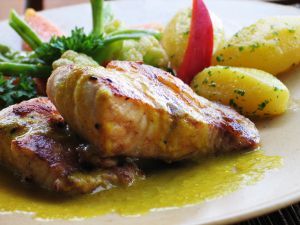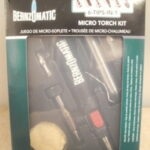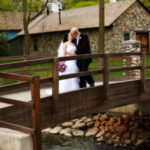As a foodie, I am completely fascinated with the way my favorite entrées, snacks and desserts look in photographs online and in cookbooks. Some of the photos depict real dishes cooked by real hands. But in most cases, food stylists are employed to convey the dishes in such a way that consumers become interested in the recipes. I’ve heard of a few tricks that have fooled people for years. But in doing a little digging, I realized that the world of food styling has become quite sophisticated.
Blow Torch
According to food photographers, meat is a pretty delicate item to capture on film. Depending upon the cut of meat, and how you’re intending to illustrate it, you may have to “doctor” the merchandise a bit. To brown steaks and burgers, giving them the appearance that they have been cooked all the way through, stylists use a blow torch. This technique is often used in ads and photography featuring oven-roasted poultry.
Spray Deodorant
You probably didn’t know that in order to make some fruits break into a “cold sweat” they are actually sprayed with deodorant. The substance somehow produces a frosty looking sheen that makes apples and grapes look like they’ve been plucked straight from the freezer.
Cotton Balls
Have you ever wondered how the food photographer is able to capture steaming pasta so perfectly? Cotton Balls! Yes, these fuzzy household items are soaked in water and then microwaved. They are then arranged with the food in such a way that the entrée appears to be steaming hot.
When syrup is not the right color or viscosity for photographing, food stylists often used motor oil. Apparently, this is an old trick used frequently in breakfast ads. And in fact, sometimes pancakes and waffles are coated with fabric protector so that the motor oil doesn’t saturate the food.
Hairspray
Hairspray isn’t just for curls and waves. These days it keeps cakes looking fresh. Stylists, in an effort to keep the slices from looking dry, will douse them with a good sheen to keep the confection looking moist.
Food “Make-Up”
Just in case the tomatoes in a dish are having a bad “hue” day, food stylists are prepared to jump in to the rescue. Food coloring is often used to enhance a food’s natural color. And in some cases it can be used to give meat the appearance of being rare.
The “Blue Stuff”
I found it endearing that within the subculture of food stylists, there is a common respect for “the blue stuff” also known as Blu-Tack. This sticky substance can be manipulated to hold down certain objects (like flatware) that would otherwise be tousled about by gravity.
If you’re wondering how the chocolate syrup on that sundae stays put, it’s probably because of a cleverly-placed piece of paper towel beneath the gooey sauce. Quite simply, the chocolate sticks to the paper, while the sundae is being photographed.
Believe it or not, sometimes one food can “stand in” for another food. In this case, the stand-in is mashed potatoes-giving ice cream a helping hand under the hot lights of the food studio. The mashed potato texture can be easily manipulated, its color altered to reflect a particular flavor of ice cream.
Mouthwatering “Feng Shui”
Another trick that food stylists employ doesn’t necessarily involve props or fancy manipulation. In fact, a general knowledge of certain feng shui principles can help boost the physical appeal of your food photography. For example, it is believed that warm colors entice people to eat. Thus, these colors are coordinated in such a way that the food makes viewers hungry.
SOURCES:
www.foodtechie.com
www.culinaryschoolsu.com
www.liketocook.com



